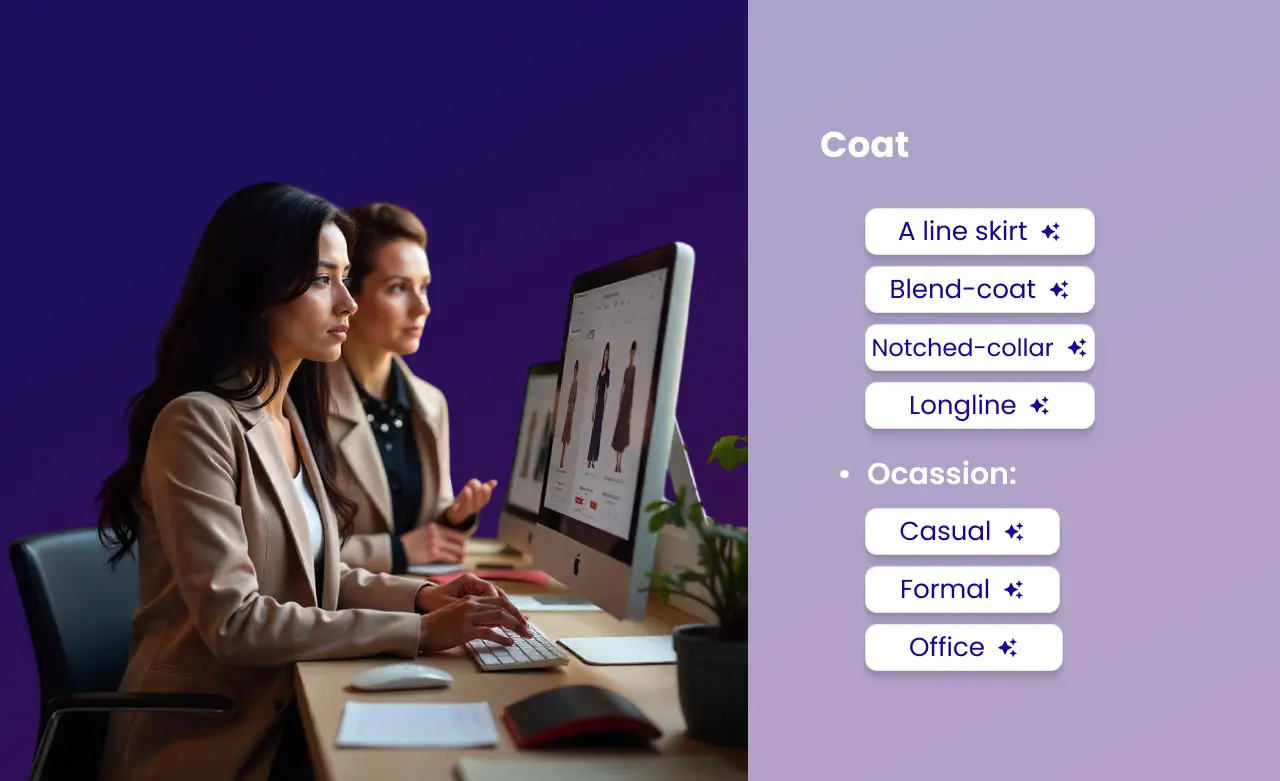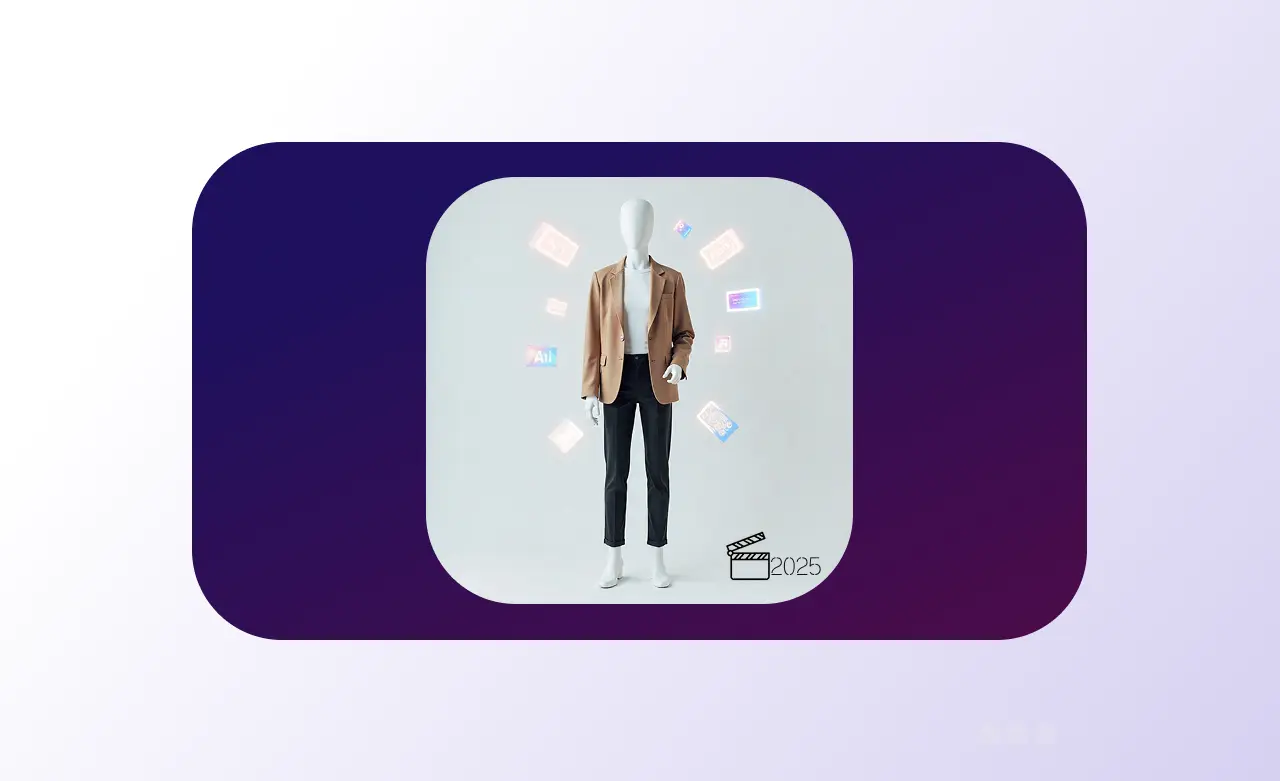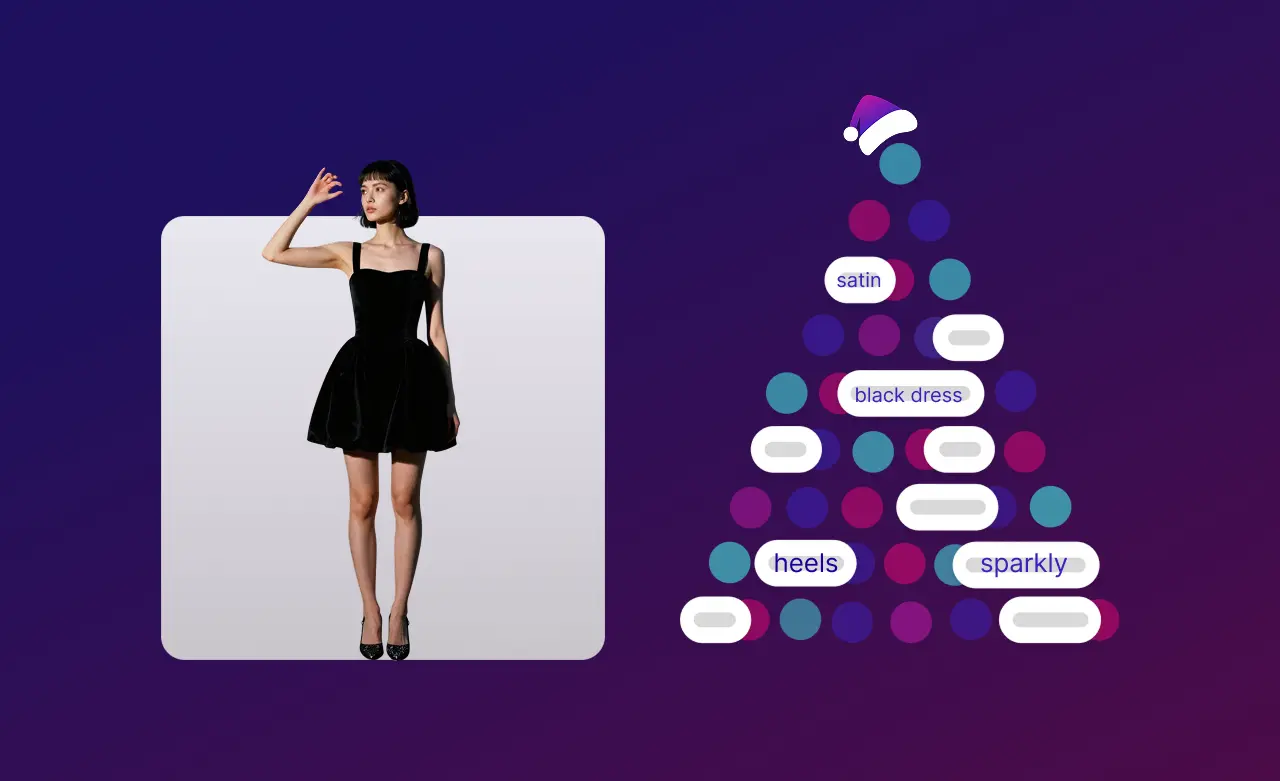How to Write Fashion Product Titles and Descriptions That Actually Sell

In fashion eCommerce, your product titles and descriptions do more than just identify items. They act as your first and most persuasive sales tool. A clear and engaging product title grabs attention in search results, while a well-written description brings the product to life and encourages shoppers to buy.
Today’s shoppers expect more than a basic list of specs. In fact, 77.5% of e-commerce apparel shopping carts are abandoned, often because product information is incomplete or unclear. When descriptions lack detail or fail to set accurate expectations, customers hesitate to finalize their purchase. Clear, detailed product content not only informs but also builds trust, helping reduce cart abandonment and encouraging shoppers to complete their orders.
To help your brand stand out and increase sales, mastering how to write product descriptions that sell is essential.
Here are seven practical tips to help you create product titles and descriptions that convert visitors into buyers while supporting your SEO efforts.
7 Tips for Writing Fashion Product Titles and Descriptions That Convert
These tips will help you optimize fashion product listings for both customers and search engines, improve product detail page SEO, and elevate your fashion eCommerce conversion optimization.
1. Know Your Target Shopper and Speak Their Language
Generic content may list features. Great content speaks directly to your target audience.
Start by defining your ideal customer: Are they trendsetters? Minimalists? Eco-conscious millennials?
Then ask yourself:
- Who is the product for?
- What are the key product details?
- Where and when should someone wear it?
- Why is it better than the competition?
Example: Instead of “White Linen Shirt” as a basic title, try:
"Airy Linen Shirt with a Relaxed Fit”
Followed by a compelling description that says: "This linen shirt is perfect for summer getaways or casual Fridays, offering breathable comfort and effortless style all day long."
Titles and descriptions tailored to a specific audience don’t just inform, they convert. They help customers picture themselves in the product, making it feel like it was made just for them.
2. Focus on Clear and Descriptive Titles
Your eCommerce product titles are the first thing shoppers and search engines see, so you have to make them count. Avoid one-word or overly broad titles. Instead, be specific about the product type, key attributes, and style. Use a consistent format across all titles to help shoppers quickly understand and compare your products. A good structure to follow is:
[Brand] [Product Type] [Color] [Key Feature] [Size] [Material]
Example: Instead of “Dress,” use “Luna Wrap Dress Blue Midi Cotton.”
Strong descriptive fashion product titles improve product discoverability and instantly communicate value to both shoppers and search engines.
3. Structure Descriptions for Easy Skimming
Online shoppers tend to skim rather than read every detail. Organize your fashion product descriptions with short, clear sentences and bullet points to make your fashion them easy to scan. This helps shoppers quickly find the information they need and keeps them engaged.
Example: This versatile wrap dress combines style and comfort:
- Flattering midi length with a wrap silhouette
- Soft, breathable cotton blend fabric
- Ideal for spring and summer occasions
- Easy care with machine-washable material
4. Benefits First, Features Second
Listing what the product is isn’t enough. Good product copywriting for fashion means telling shoppers what it does for them.
Instead of: “100% Organic Cotton” Say: “Soft against the skin and breathable enough to keep you cool through warm days.”
Features inform. Benefits persuade. That’s the heart of product copywriting that truly converts.
5. Show, Don’t Tell: Detail Matters
Phrases like “high quality” or “best-in-class” don’t mean much without proof.
Don’t just say: “Luxury fabric” Instead, say: “Crafted from Italian-spun silk that glides over your skin with every step.”
If you’re claiming it’s “our most flattering cut,” explain why: "The tailored waist and elongating pleats shape your silhouette without sacrificing comfort."
Be specific. Be transparent. Details build trust, and trust drives sales.
6. Paint a Picture with Words
Let your customers feel the product before they even touch it.
Use vivid, sensory words: soft, crisp, flowing, sculpted.
Example: “Imagine wearing this light linen shirt on a warm summer day. It feels soft and cool, with a relaxed fit that’s perfect for the heat.”
When people can see, feel, and experience the product through your words, they’re far more likely to buy it.
7. Optimize for Search Without Losing the Soul
Your product page shouldn’t read like it was written by a robot wearing a trench coat.
Great SEO speaks human first, algorithm second.
Yes, keywords matter, but so does personality. For example, instead of saying “women’s red dress,” try “flowy red midi dress for summer weddings.” It’s still keyword-rich, but it paints a picture shoppers can connect with.
When you balance the right SEO for fashion product pages with language your customers actually use, you climb rankings AND increase conversions. That’s fashion eCommerce conversion optimization with heart and hustle.
The Power of AI + Human Creativity
Creating hundreds or thousands of emotionally engaging, SEO-optimized product listings takes serious time and effort.
That’s where your AI colleague comes in.
Pixyle’s AI product title and description generator analyzes fashion images, detects key details, and generates content that:
- Sounds natural and matches your brand voice
- Includes accurate, useful information
- Uses core and trend-based keywords for SEO
- Aims to boost sales
Our Pixyle AI database speaks fashion so fluently and it translates it into SEO gold.
Our data enrichment platform generates detailed product attributes and automatically turns them into clear, engaging product titles and descriptions. Think “sleek black ankle boots with a chunky heel” instead of just “black boots.”
These enriched attributes also power smart, search-friendly product tags that boost SEO and make your products more discoverable. The best part? Everything is fully customizable to match your brand’s voice and style, regardless of wanting to be minimalist chic or bold and playful.
The result? Consistent, conversion-ready listings that look good, read great, and stay competitive in the ever-scrolling world of fashion eCommerce.
Final Thoughts: Fashion That Sells Starts with Words
Writing compelling fashion product titles and descriptions is both an art and a science. By knowing your audience, highlighting benefits, using descriptive and scannable content, and optimizing for both search engines and shoppers, you create listings that stand out and sell.
Using AI tools like Pixyle AI helps you scale this process efficiently so you stay ahead in the hectic world of fashion eCommerce.
Ready to elevate your product content? Get started with Pixyle today.
Discover Pixyle Ultimate Dress type Taxonomy Guide
Learn how to structure your catalog in a way that matches how people actually shop.


Boost your sales with AI product tagging
Optimize your eCommerce catalog to improve discovery and conversions.






